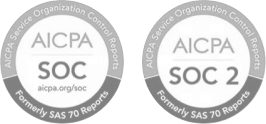Affirmative Action
Article Navigation
Affirmative Action refers to a set of proactive practices designed to promote equal opportunity in employment, education, and other areas by actively addressing past and present discrimination. In the workplace, it involves deliberate steps to ensure that individuals from historically underrepresented groups such as women, racial minorities, veterans, and people with disabilities have fair access to hiring, promotions, and training. Affirmative Action is not about hiring unqualified candidates. It focuses on expanding outreach, eliminating systemic barriers, and fostering a more diverse and inclusive workforce. Employers subject to certain United States federal regulations, particularly government contractors, are often required to implement Affirmative Action programs and regularly review their workforce demographics to identify and address disparities.
Affirmative Action Plan (AAP)
An Affirmative Action Plan is a formal written document that outlines an employer’s strategies and measurable objectives for increasing workplace diversity and ensuring equal opportunity. Required by United States federal law for certain government contractors and subcontractors, an AAP typically includes:
- Workforce Analysis – A review of current staff composition by job category, race, gender, and other relevant factors.
- Identification of Underutilization – Recognizing areas where protected groups are underrepresented compared to their availability in the labor market.
- Action Oriented Programs – Specific steps to recruit, hire, train, and promote individuals from underrepresented groups.
- Internal Audit and Reporting Systems – Mechanisms for tracking progress and making adjustments.
AAPs must be updated annually and be available for review during compliance audits by the Office of Federal Contract Compliance Programs. Beyond compliance, a well-crafted AAP serves as a roadmap for creating a more inclusive organizational culture.
Affirmative Action Policy
An Affirmative Action Policy is the public or internal statement that communicates an employer’s commitment to equal employment opportunities and proactive diversity initiatives. While an AAP is a detailed operational plan, the policy is typically shorter and emphasizes the organization’s principles and obligations. Key elements include:
- Commitment Statement – Declaring adherence to all applicable equal opportunity and affirmative action laws.
- Scope – Defining the groups covered, such as minorities, women, individuals with disabilities, and protected veterans.
- Implementation Responsibility – Identifying the executives, managers, or HR personnel accountable for carrying out the policy.
- Accessibility – Making the policy available to employees, applicants, and the public, often through postings in the workplace or inclusion in employee handbooks.
The policy not only fulfills legal requirements but also signals to employees, clients, and stakeholders that the organization values fairness, diversity, and inclusion.
Equal Employment Opportunity (EEO)
Equal Employment Opportunity is the principle that all individuals should have an equal chance to apply for, obtain, and advance in employment, free from discrimination based on protected characteristics such as race, color, religion, sex including pregnancy, sexual orientation, and gender identity, national origin, age, disability, or genetic information. In the United States, EEO is enforced by the Equal Employment Opportunity Commission through various federal laws including Title VII of the Civil Rights Act of 1964, the Americans with Disabilities Act, and the Age Discrimination in Employment Act.
Employers covered by these laws must ensure that recruitment, compensation, benefits, training, promotions, and terminations are handled without bias. They are also required to provide reasonable accommodations to qualified employees with disabilities and to maintain workplaces free from harassment. EEO principles underpin Affirmative Action, but while EEO is about ensuring fairness in treatment, Affirmative Action adds proactive measures to correct imbalances.
Employment Law Compliance
Employment law compliance is the practice of adhering to all applicable laws, regulations, and contractual obligations that govern the employer–employee relationship. This includes but is not limited to:
- Anti Discrimination and Harassment Laws – Ensuring compliance with EEO statutes and related state or local laws.
- Wage and Hour Laws – Following rules set by the Fair Labor Standards Act and equivalent state laws for minimum wage, overtime pay, and recordkeeping.
- Leave Laws – Complying with statutes such as the Family and Medical Leave Act or applicable paid leave laws.
- Health and Safety Regulations – Meeting Occupational Safety and Health Administration standards.
- Immigration Compliance – Verifying employee eligibility to work through systems like Form I-9 and E Verify.
In the context of HR and payroll, employment law compliance also covers timely and accurate wage payments, correct employee classification as exempt or non-exempt, proper tax withholding, and benefits administration. Noncompliance can lead to fines, lawsuits, reputational damage, and in severe cases, loss of business licenses or government contracts. Effective compliance requires continuous monitoring of regulatory changes, regular audits, and employee training.































 Back
Back